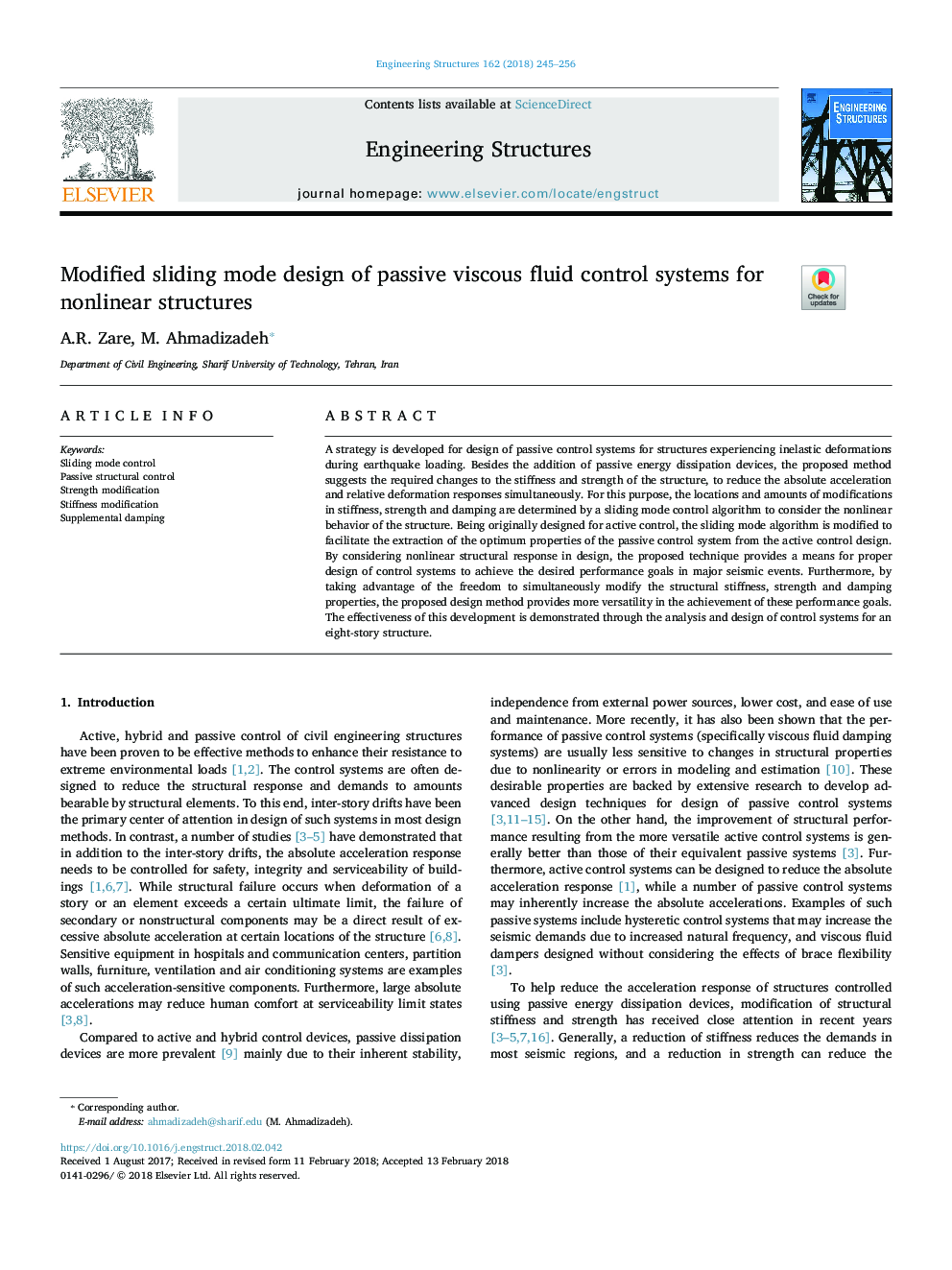| Article ID | Journal | Published Year | Pages | File Type |
|---|---|---|---|---|
| 6738015 | Engineering Structures | 2018 | 12 Pages |
Abstract
A strategy is developed for design of passive control systems for structures experiencing inelastic deformations during earthquake loading. Besides the addition of passive energy dissipation devices, the proposed method suggests the required changes to the stiffness and strength of the structure, to reduce the absolute acceleration and relative deformation responses simultaneously. For this purpose, the locations and amounts of modifications in stiffness, strength and damping are determined by a sliding mode control algorithm to consider the nonlinear behavior of the structure. Being originally designed for active control, the sliding mode algorithm is modified to facilitate the extraction of the optimum properties of the passive control system from the active control design. By considering nonlinear structural response in design, the proposed technique provides a means for proper design of control systems to achieve the desired performance goals in major seismic events. Furthermore, by taking advantage of the freedom to simultaneously modify the structural stiffness, strength and damping properties, the proposed design method provides more versatility in the achievement of these performance goals. The effectiveness of this development is demonstrated through the analysis and design of control systems for an eight-story structure.
Related Topics
Physical Sciences and Engineering
Earth and Planetary Sciences
Geotechnical Engineering and Engineering Geology
Authors
A.R. Zare, M. Ahmadizadeh,
